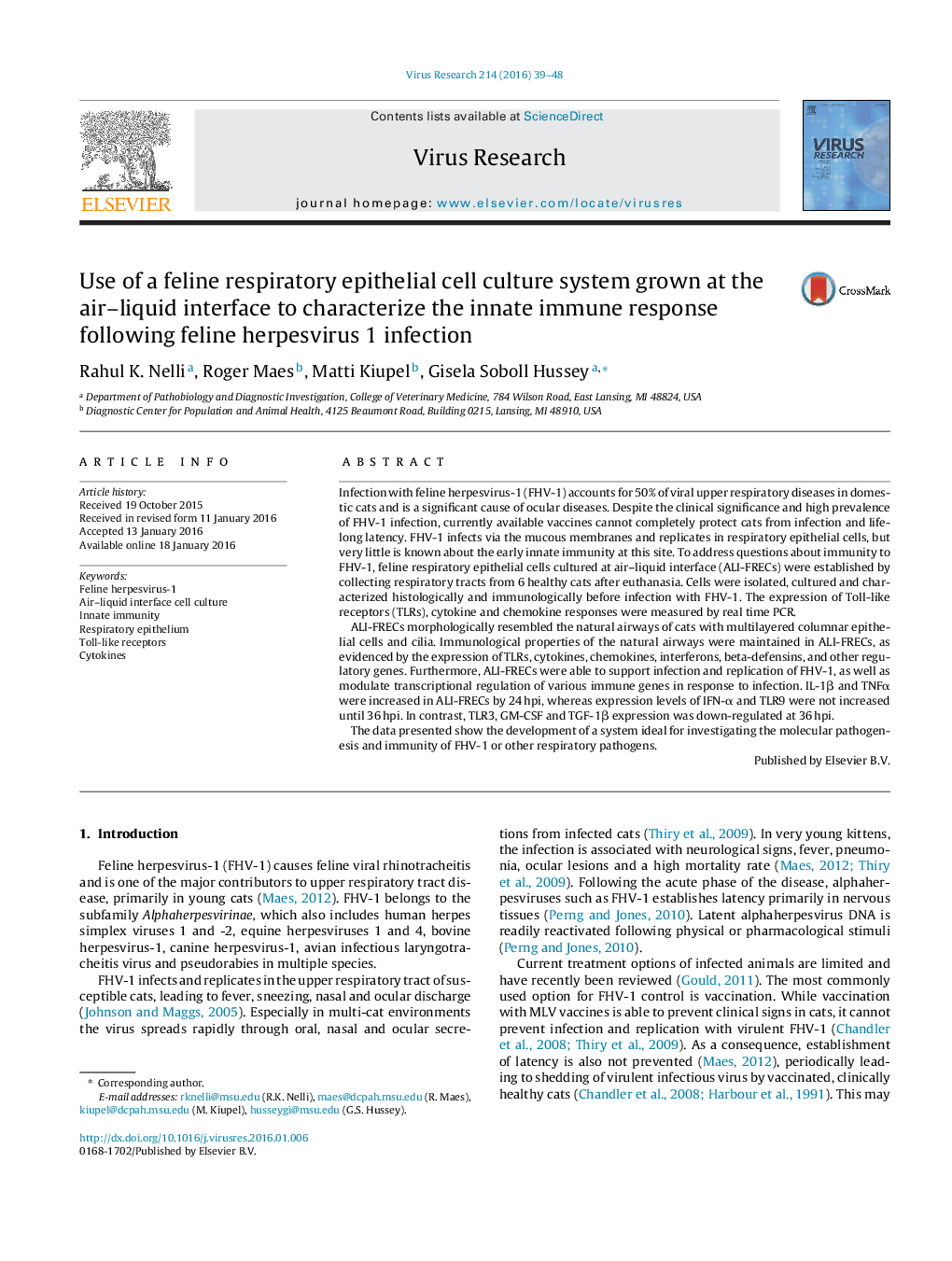| Article ID | Journal | Published Year | Pages | File Type |
|---|---|---|---|---|
| 3428012 | Virus Research | 2016 | 10 Pages |
•We have developed a feline air–liquid interface respiratory epithelium cell culture system (ALI-FRECs).•Upon characterization this ALI-FREC system morphologically and immunologically resembled the natural airways of cats.•ALI-FRECs were susceptible to FHV-1 infection and responded with modulation of transcriptional regulation of immune genes.•ALI-FRECs have potential for studying molecular pathogenesis and immune regulation of respiratory pathogens that infect via the respiratory tract epithelium.
Infection with feline herpesvirus-1 (FHV-1) accounts for 50% of viral upper respiratory diseases in domestic cats and is a significant cause of ocular diseases. Despite the clinical significance and high prevalence of FHV-1 infection, currently available vaccines cannot completely protect cats from infection and lifelong latency. FHV-1 infects via the mucous membranes and replicates in respiratory epithelial cells, but very little is known about the early innate immunity at this site. To address questions about immunity to FHV-1, feline respiratory epithelial cells cultured at air–liquid interface (ALI-FRECs) were established by collecting respiratory tracts from 6 healthy cats after euthanasia. Cells were isolated, cultured and characterized histologically and immunologically before infection with FHV-1. The expression of Toll-like receptors (TLRs), cytokine and chemokine responses were measured by real time PCR.ALI-FRECs morphologically resembled the natural airways of cats with multilayered columnar epithelial cells and cilia. Immunological properties of the natural airways were maintained in ALI-FRECs, as evidenced by the expression of TLRs, cytokines, chemokines, interferons, beta-defensins, and other regulatory genes. Furthermore, ALI-FRECs were able to support infection and replication of FHV-1, as well as modulate transcriptional regulation of various immune genes in response to infection. IL-1β and TNFα were increased in ALI-FRECs by 24 hpi, whereas expression levels of IFN-α and TLR9 were not increased until 36 hpi. In contrast, TLR3, GM-CSF and TGF-1β expression was down-regulated at 36 hpi.The data presented show the development of a system ideal for investigating the molecular pathogenesis and immunity of FHV-1 or other respiratory pathogens.
